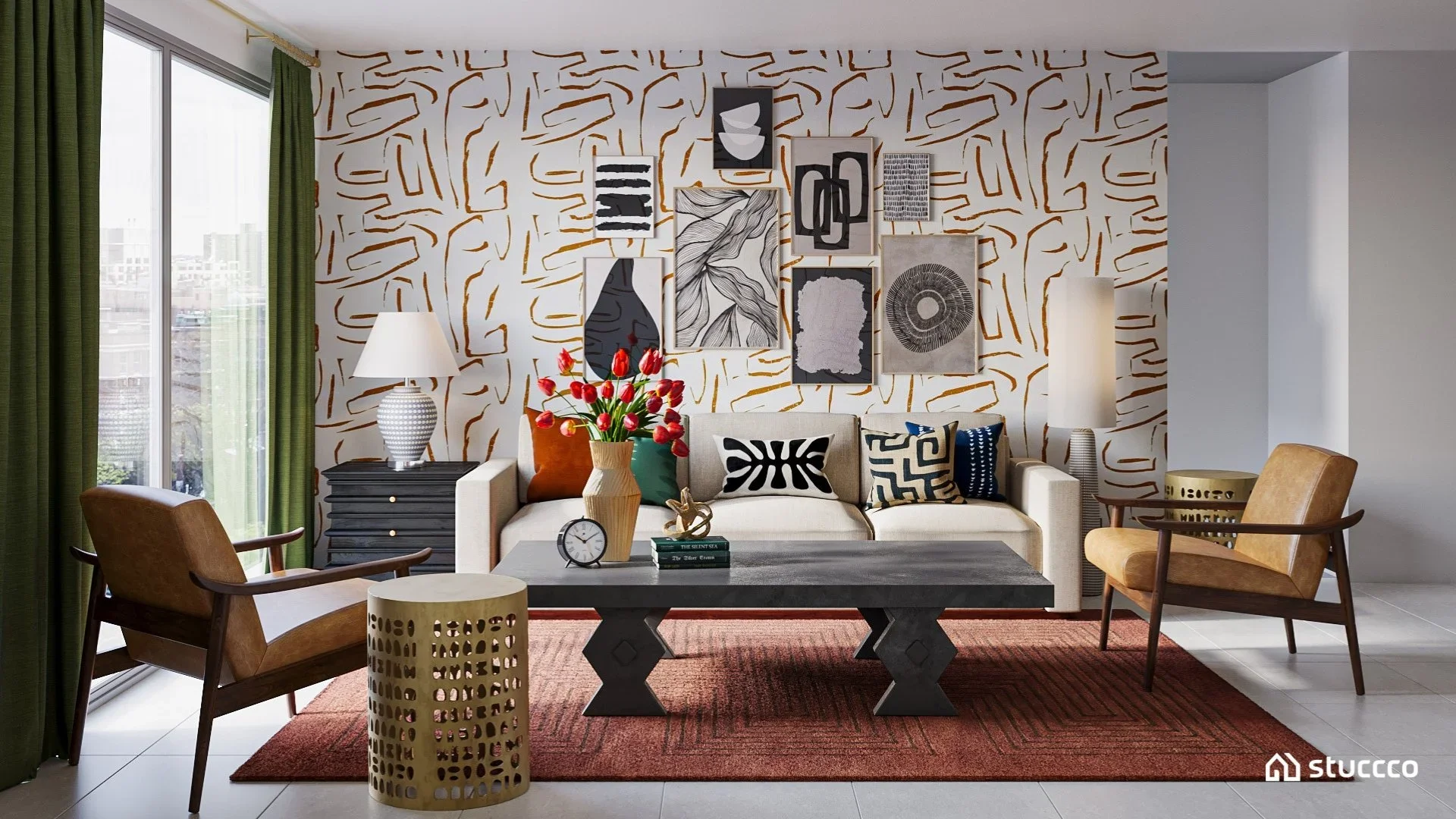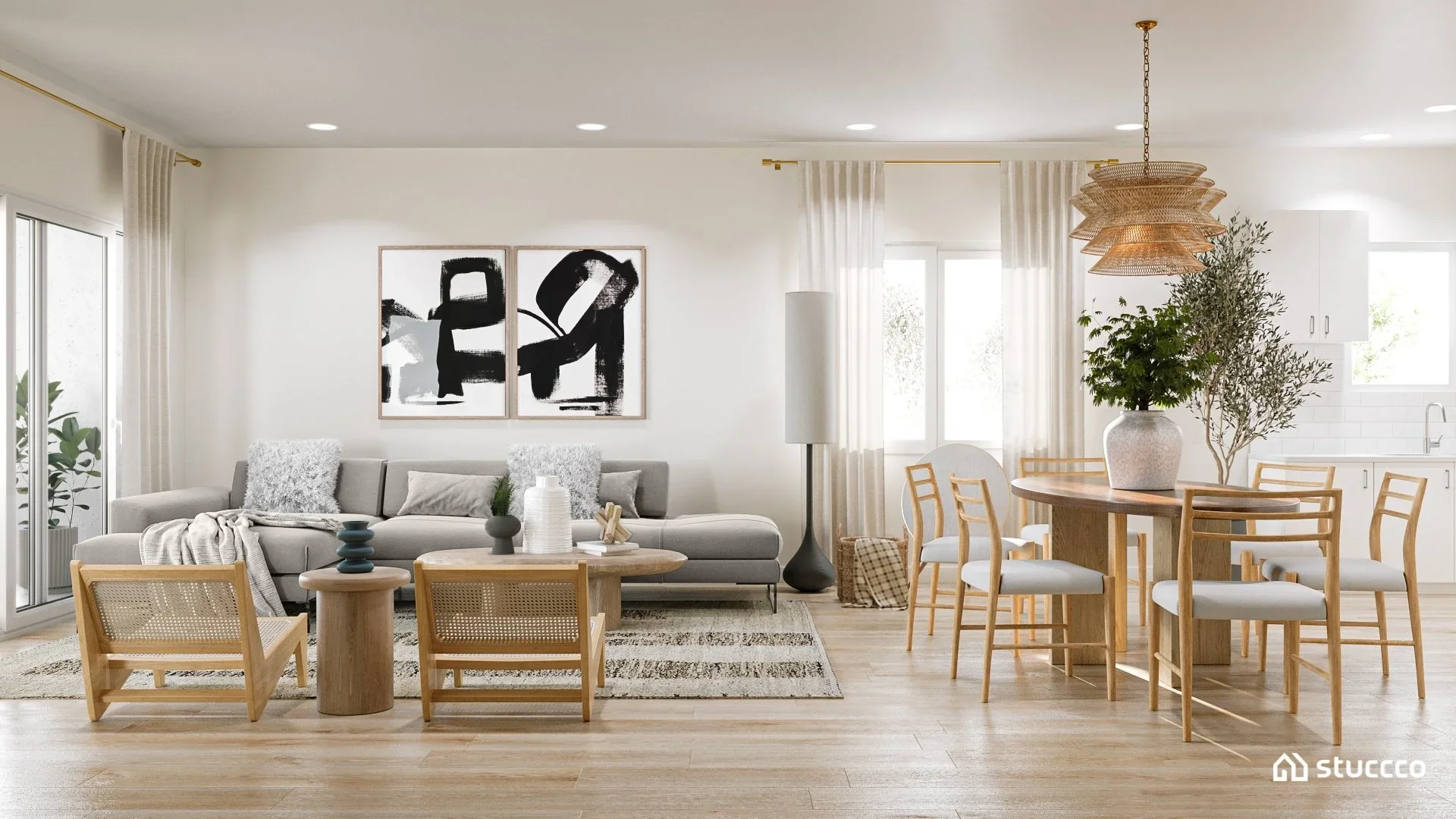Ask Joshua: How Do I Know When a Room Is ‘Done’?
Hi Joshua!
I think I’ve done everything I can with my living room - I bought a sofa I love, added a rug, hung a couple of art pieces, and styled the shelves. But every time I walk into the room, it still feels like something’s missing. How do I know when a room is actually ‘done’? I keep changing things but I can’t tell if I’m overthinking it.
Madison - San Diego, California
Modern Boho Chic living room designed by virtual interior designer Joshua Jones of JJones Design Co. Photorealistic 3D rendering created in collaboration with Stuccco.
Hi Madison,
Thank you for your question — I love when readers reach out with design dilemmas like this. Wondering whether a room is truly “done” is more common than you might think, especially when you're designing your own space. You’ve made thoughtful choices, sourced pieces you love, and yet there’s still that lingering feeling that something might be missing. It can be hard to know whether you should keep refining or simply enjoy what you’ve created.
The truth is, rooms rarely announce when they're complete. There’s no final click like assembling furniture. A room feels “done” when the major decisions are resolved and the space supports your lifestyle without you constantly questioning what should happen next.
Here’s how I evaluate when a room has reached that point:
1. The room has a clear visual anchor.
Every well-designed space has a focal point — that one moment the eye lands on first. It could be the fireplace, a large piece of art, a stunning pendant light, or even a beautiful window. If you walk into your living room and your eye doesn’t know where to go, the space may look decorated, but it isn't grounded yet.
2. The furniture layout feels intentional and effortless.
When a room is complete, the layout just works. You can move through the space comfortably, and the seating arrangement naturally encourages conversation or relaxation. If you find yourself constantly shifting furniture “just to try it,” it may be a sign the layout is still evolving.
3. The color palette is cohesive.
Cohesion creates calm. A strong room doesn’t rely on matching everything — it relies on a clear palette. Try choosing one dominant color, one supporting tone, and one accent. If your space feels busy or disjointed, it’s often due to competing undertones or too many accents fighting for attention.
4. Surfaces show balance, not clutter.
Bookshelves, consoles, and side tables should feel curated — not crowded and not sparse. Vary heights, shapes, and textures, but allow for negative space. If every surface is filled simply because you own items, the room can start to lose visual clarity.
5. The finishing layers are in place.
Many people stop at the furniture stage, but the finishing layers are what bring personality and depth:
Throw pillows and blankets that reinforce the palette
Window treatments that soften the architecture
Plants, books, trays, ceramics, or personal objects
These aren’t “extras.” They are what give the room soul.
6. You feel at ease in the space.
When a room is done, you feel a sense of contentment. You stop searching for the missing piece because the space supports you. The design begins to feel effortless instead of questioned.
At the end of the day, remember this:
A room isn’t “done” because every corner is filled.
A room is “done” when there’s nothing left you want to remove.
When the space reflects your style, functions beautifully, and brings you ease every time you walk into it — that’s when it’s complete.
Thank you again for the thoughtful question, Madison. I hope this helps you trust your instincts and enjoy the space you’ve created. And if you ever reach a point where you want a second opinion, sometimes even a brief design consultation can bring clarity and confidence.
Warmly,
Joshua
Have interior design related questions? You can ask Joshua here.


